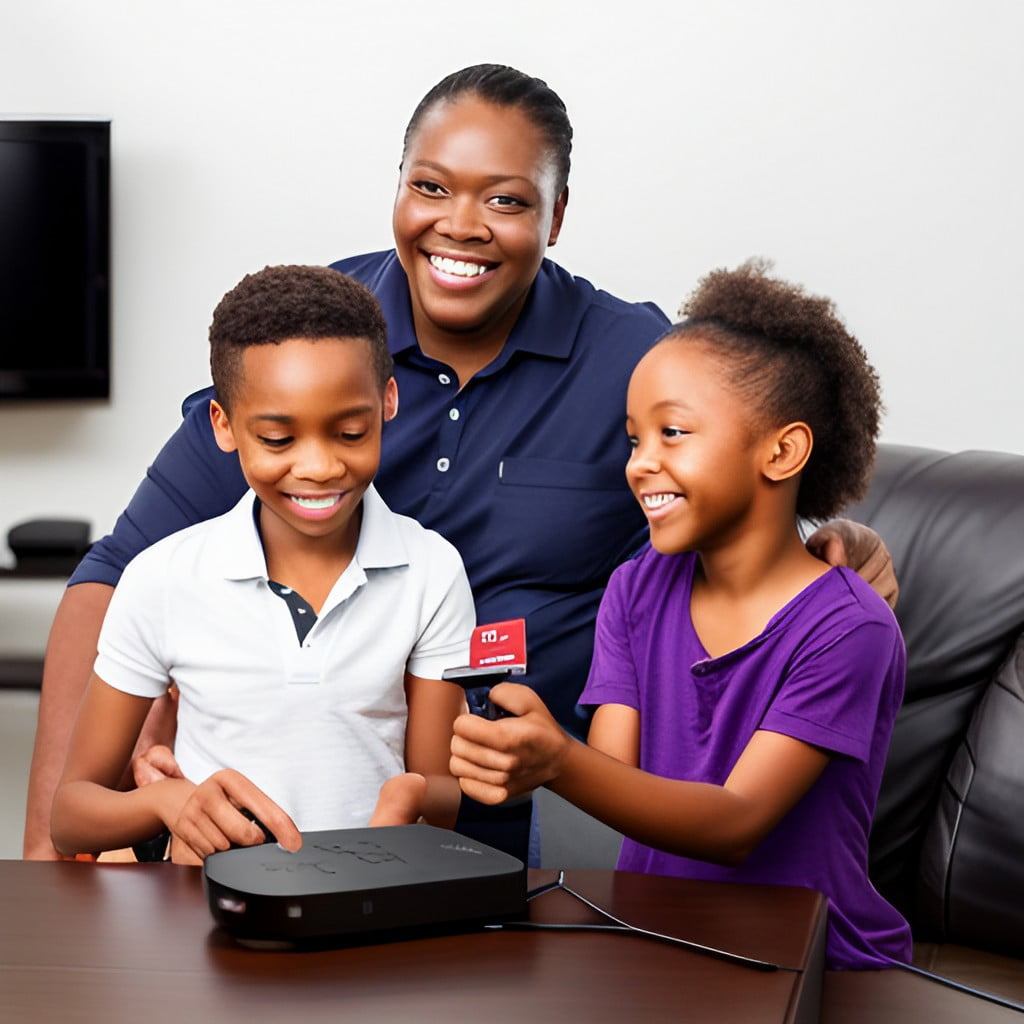Are you a parent who wants to ensure your child’s online safety? Parental control software is the answer! This article will guide you through how parental control works and how it can help protect your children from inappropriate content, monitor their online interactions, and manage their screen time effectively.
Setting up parental control software is the first step towards safeguarding your child’s online experience. With just a few simple steps, you can install this software on all of their devices, including smartphones, tablets, and computers. Once set up, the software acts as a digital filter, blocking access to inappropriate websites and apps that may harm your child or expose them to age-inappropriate content.
In addition to filtering out harmful content, parental control software allows you to monitor your child’s online interactions. You can receive alerts if they engage in potentially dangerous conversations or encounters with strangers. By keeping an eye on these activities, you can intervene when necessary and teach them about responsible internet usage.
Another important aspect of parental control software is managing screen time. It enables you to set limits on the amount of time your child spends on certain apps or websites. This helps prevent excessive usage that could interfere with schoolwork or social interaction.
Different devices may require different settings for optimal protection. Parental control software allows you to adjust settings specifically tailored for each device used by your child. Whether it’s limiting app downloads on their smartphone or restricting website access on their computer, this software ensures consistent monitoring across various platforms.
In conclusion, understanding how parental control works empowers parents like yourself to provide a safe digital environment for your children. By setting up this software and utilizing its features such as filtering inappropriate content, monitoring online interactions, managing screen time wisely, and adjusting settings for different devices; you are actively taking steps towards protecting your child from potential dangers lurking in the digital world.
Setting Up Parental Control Software
Setting up parental control software is crucial for keeping your children safe online. With the increasing use of technology, it’s important to create a secure digital environment where your kids can explore without stumbling upon harmful content or engaging in risky online behavior. By installing parental control software on their devices, you can have peace of mind knowing that you’re taking proactive steps to protect them from potential dangers.
To start, choose a reliable parental control software that suits your needs and preferences. Many options are available, offering features such as website blocking, screen time management, and social media monitoring. Once you’ve selected the right software, follow the straightforward installation instructions provided by the provider. Typically, this involves creating an account and linking your child’s device to it. This way, you’ll be able to customize settings according to age-appropriate restrictions and monitor their activities remotely.
Transitioning into the subsequent section about filtering inappropriate content, parental control software allows you to filter out websites and applications that may contain explicit or harmful material. By doing so, you can ensure that your children are accessing only appropriate content while browsing the internet or using apps. Additionally, many programs offer real-time alerts or notifications when potentially dangerous activities are detected so that you can address any concerns promptly.
Filtering Inappropriate Content
Implementing filters helps to ensure that children are shielded from accessing inappropriate content. By setting up filters on your child’s devices and internet browsers, you can block specific websites or categories of content that are deemed inappropriate for their age. These filters work by analyzing the content of webpages and determining whether they contain any explicit material, violence, or other harmful elements.
With the use of advanced technology, these filters can accurately assess the content in real-time and prevent it from being displayed on your child’s screen.
In addition to blocking explicit websites, filters also allow you to restrict access to certain types of content such as adult themes, gambling sites, or social media platforms. This way, you can create a safe online environment for your child while still allowing them to explore educational and age-appropriate websites.
By implementing these filters, you can have peace of mind knowing that your child is protected from stumbling upon inappropriate content online.
With filtering in place to protect your child from accessing inappropriate content, the next step is blocking apps and websites altogether. By doing so, you can further enhance parental control over what your child can access on their devices. This will be particularly useful when it comes to restricting access to certain gaming platforms or social media apps that may not be suitable for their age group.
Blocking Apps and Websites
By blocking certain apps and websites, you can create a digital fortress for your child, ensuring that they’re protected from potential online dangers. With the vast amount of information available on the internet, it’s important to filter out content that may be inappropriate or harmful for your child.
By using parental control features, you can easily block access to specific apps and websites that you deem unsuitable for their age or interests. Whether it’s social media platforms with age restrictions or websites with explicit content, these controls allow you to have peace of mind knowing that your child is browsing safely.
Blocking apps and websites isn’t about restricting your child’s freedom, but rather about guiding them towards responsible online behavior. It helps them develop healthy habits by limiting access to time-wasting applications or sites that may expose them to cyberbullying or other dangers. Additionally, it encourages open communication between parents and children as they discuss why certain apps or websites are blocked and what alternatives exist.
By actively engaging in this process, you can teach your child critical thinking skills and empower them to make informed choices when navigating the digital world.
Now that you understand how blocking certain apps and websites can protect your child online, let’s move on to monitoring their online interactions. This next step will provide an additional layer of security by allowing you to stay informed about who they interact with and what kind of content they encounter online.
Monitoring Online Interactions
Start monitoring your child’s online interactions to ensure their safety and gain insight into who they interact with and what content they come across. By keeping an eye on their online activities, you can protect them from potential dangers and guide them towards positive experiences.
Here are three reasons why monitoring online interactions is crucial for your child:
- Safety: The internet can be a risky place, with cyberbullying, inappropriate content, and online predators lurking around. By monitoring your child’s online interactions, you can identify any suspicious behavior or harmful content that may harm them. This allows you to take immediate action to protect your child and address any issues that may arise.
- Awareness: Monitoring helps you understand who your child interacts with online and the type of content they engage with regularly. It gives you valuable insights into their interests, concerns, and influences. This awareness enables you to have open conversations about internet safety, digital citizenship, and responsible online behavior.
- Guidance: As a parent, it’s important to guide your child through the vast digital landscape. By monitoring their online interactions, you can offer guidance on appropriate websites, apps, and social media platforms that align with their age and interests. You can also provide support in navigating challenging situations or dealing with cyberbullying.
By actively monitoring your child’s online interactions using parental control tools or software solutions available today, you can ensure their safety while giving them the freedom to explore the digital world responsibly.
Now let’s dive into how managing screen time plays a crucial role in maintaining a healthy balance between technology use and other activities in your child’s life…
Managing Screen Time
Take control of your child’s screen time to ensure a healthy balance between technology use and other activities in their life. It’s important to set limits on the amount of time your child spends in front of screens, whether it be watching TV, using a tablet, or playing video games.
Encourage them to engage in physical activities, spend time with friends and family, and pursue hobbies that don’t involve screens. By managing their screen time, you can help prevent them from becoming too dependent on technology and promote a well-rounded lifestyle.
Now that you understand the importance of managing your child’s screen time, let’s talk about adjusting settings for different devices. Each device has its own settings that allow you to control what content your child can access and how much time they can spend using it. Whether it’s setting up parental controls on their smartphone or creating separate user profiles on a gaming console, taking the time to adjust these settings will give you peace of mind knowing that your child is using technology in a safe and responsible way.
Adjusting Settings for Different Devices
Now that you’ve learned how to manage screen time for your kids, let’s dive into adjusting settings for different devices. This is an important aspect of parental control as it allows you to customize the restrictions and permissions based on the specific device your child is using.
Whether it’s a smartphone, tablet, or computer, each device may require different settings to ensure a safe and age-appropriate experience. By adjusting the settings for different devices, you have the power to create a personalized digital environment that caters to your child’s needs.
For example, you can set time limits on certain apps or websites on their smartphones while allowing more flexibility on their tablets for educational purposes. Additionally, you can block explicit content across all devices or restrict access to certain social media platforms on their computers.
The beauty of adjusting these settings is that you can tailor them to suit each device and strike a balance between entertainment and productivity. Remember, being able to adjust settings for different devices gives you greater control over what your child can access online. It allows you to create boundaries that align with their age and maturity level while still providing opportunities for learning and growth.
So take advantage of this feature and make sure each device in your household is optimized with parental controls tailored specifically for your children’s safety and well-being.
Conclusion
In conclusion, parental control software is a valuable tool for parents looking to protect their children’s online safety. By setting up this software, you can filter out inappropriate content and block access to specific apps and websites. This helps ensure that your child is only exposed to age-appropriate material.
Additionally, parental control software allows you to monitor your child’s online interactions, giving you peace of mind and the ability to address any potential issues or concerns. It also enables you to manage screen time by setting limits on how long your child can use certain devices or applications.
Furthermore, adjusting settings for different devices ensures that each device your child uses is appropriately protected. Whether it’s a smartphone, tablet, or computer, parental control software offers customizable options to fit your family’s needs.
Overall, parental control software provides an effective means of safeguarding your child in the digital world. By taking advantage of these tools and features, you can help create a safer online environment for your children and promote responsible internet usage from an early age.




